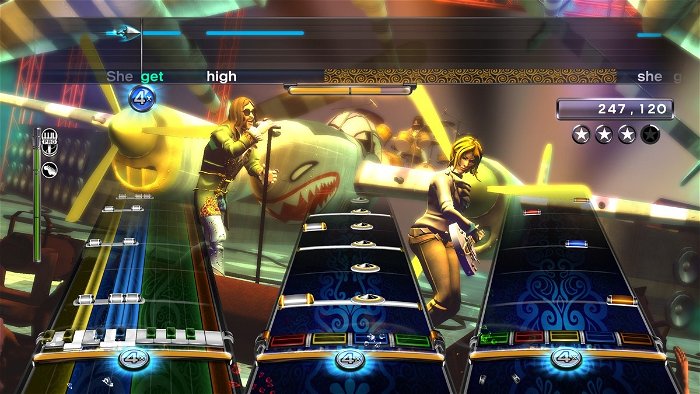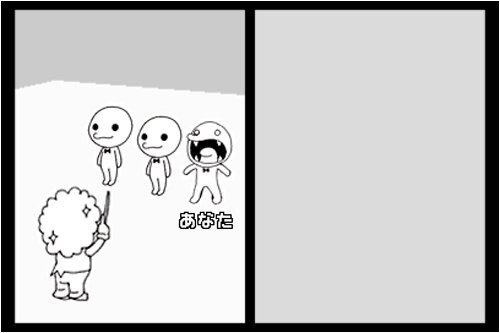While playing through Game Freak’s HarmoKnight, tapping the 3DS’ buttons to jump over pits and wallop enemies in time to the poppy soundtrack, I began to wonder when the last time was that I played a rhythm game. Since the genre’s explosion into popularity during the years of Guitar Hero and Rock Band, it’s gone into a bit of a decline. Developers and publishers appear to have moved on, perhaps thinking that there just isn’t much left to rhythm games after even the most widely enjoyed, commercially viable series have closed up shop. Is there a way to revive the genre in the widely changed videogame landscape of 2015?

Even though the genre has largely vanished from the modern mainstream, it’s easy to see how well attention to rhythm can be applied to videogame mechanics. The type of timing-based button-pressing that defines the genre has found a new home in action titles like the Batman: Arkham series, Sleeping Dogs, and Middle-earth: Shadow of Mordor. These games all couch their melee combat systems in rhythm: the player has to read enemy attacks and counter them by timing their dodges, blocks, and responding hits appropriately. These definitely aren’t rhythm games—there are too many other gameplay elements involved in these titles to be that reductive—but they still owe a large debt to the genre. While seeing this kind of influence worked into other types of games so successfully is wonderful, it’s also disheartening to think that rhythm may be relegated to little more than a design element in another title.
Still, as HarmoKnight shows, there remains a good amount of potential in a straightforward rhythm game—as long as it’s presented properly. At its heart, HarmoKnight isn’t much of a departure from the titles it draws inspiration from. The player manages every situation—whether attacking a giant boss monster or jumping past crumbling platforms—by timing their button presses in accordance with the tempo of the soundtrack. The main character may be able to attack, dodge, and leap over obstacles, but since he always runs on a set path, the mechanics boil down to nothing more than hitting the right button at the right time. Fundamentally, it’s the same type of game as Guitar Hero, PaRappa the Rapper, or Rhythm Heaven, only set apart by its presentation.

Though HarmoKnight’s story is yet another retelling of the standard heroic quest and its setting draws from the same variations on ice, water, and fire videogame “worlds” we’ve seen a million times before, the fact that any plot and defined setting exists at all helps make it stand out. The player is given reason to continue moving through the levels beyond the gameplay systems being fun to interact with. There’s a narrative arc to follow and characters to recruit along the way. Sure, the game would be much more interesting if the story and cast weren’t tired archetypes, but their very presence is enough to bulk up the solid foundation of working through increasingly challenging rhythm challenges. All of it makes me think that what audiences have likely tired of isn’t the rhythm genre, but the bare-bones nature of its most popular recent games.
Despite the fun of working through Guitar Hero’s set-lists or Rhythm Heaven’s ever-harder mini-games, there was never much attention given to anything that wasn’t the core gameplay experience. (The “career mode” of a game like Guitar Hero is a good start, but lacks depth.) If a bit of time was spent bulking up the systems surrounding the main game mechanics—if the example established by HarmoKnight was used as a springboard—it seems like there could be more life left in the genre. Consider a series of levels, wrapped up in a decent narrative framework; a cast of multiple playable characters with unique abilities; hidden secrets and challenge modes—toss in some RPG-style skill upgrading and stat-changing equipment and there doesn’t seem to be any reason a rhythm game based on the framework established by HarmoKnight’s couldn’t work well. Though I haven’t played it myself, a similar approach was taken by Square Enix with its Theatrhythm Final Fantasy series, which has been met with a fairly enthusiastic reception not just based on the nostalgic appeal of its soundtrack, but also because its gameplay incorporates elements from role-playing and side-scrolling action games. Why couldn’t these titles be used as the starting point for mainstream releases with even more robust feature sets and stories?

It’s likely that the genre is only in a temporary recession following the oversaturation it experienced in past years. Hopefully this is the case since, as even handheld releases like HarmoKnight and Theatrhythmm Final Fantasy show, there are still plenty of interesting ways for the rhythm game to evolve in coming years.




